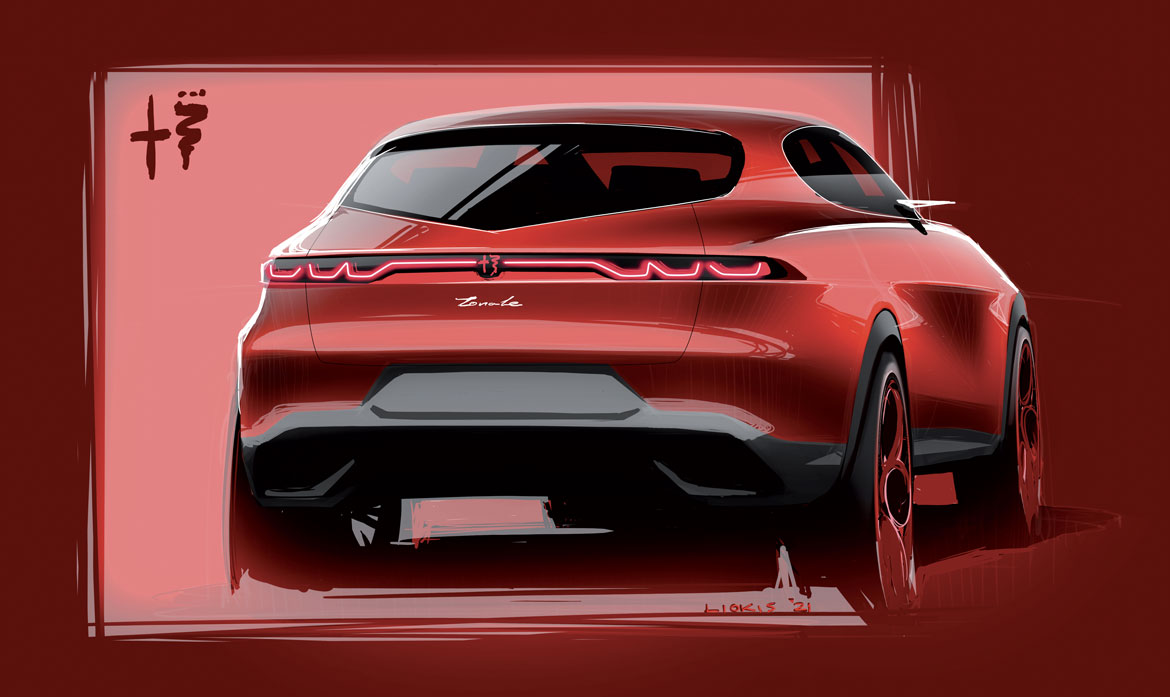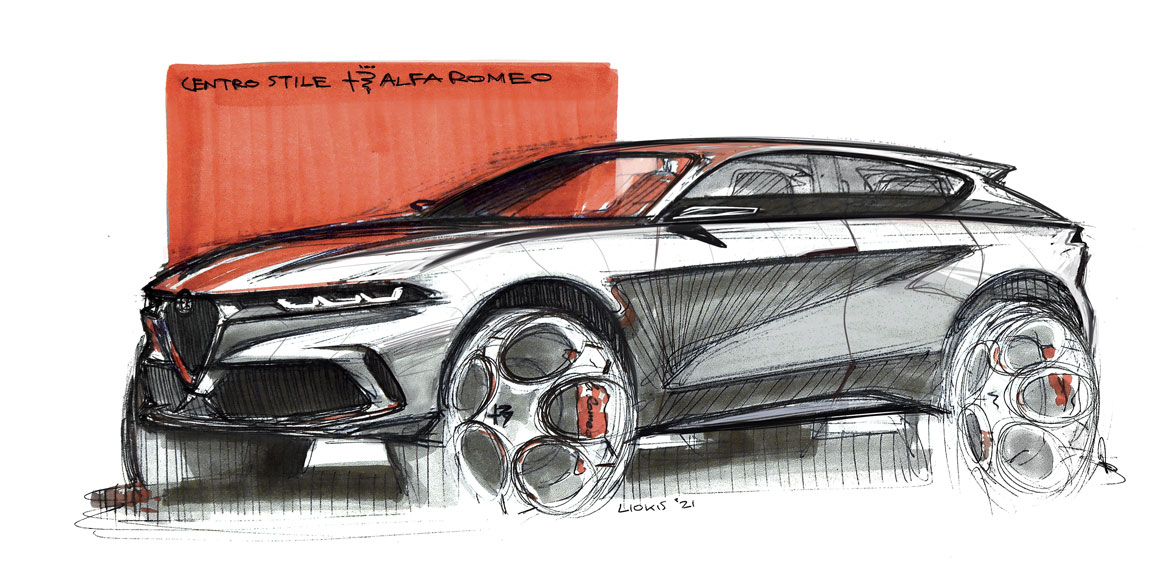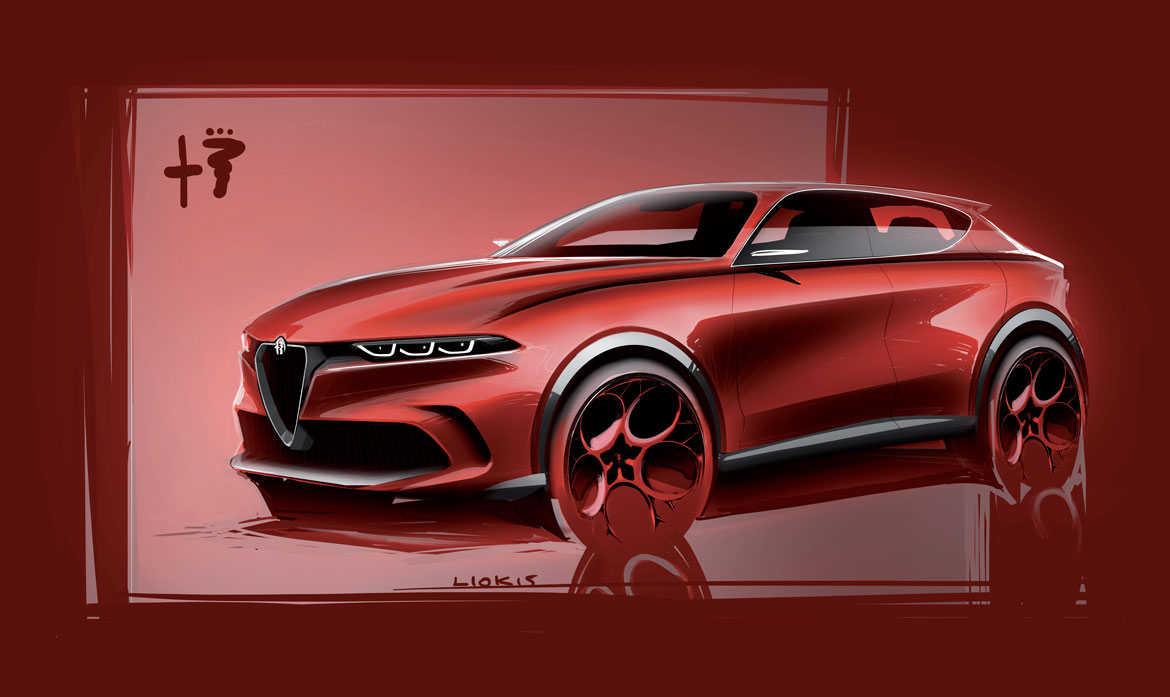A car that has really lived up to expectations. The Tonale is the first Alfa to come out of the Stellantis group, but its story began in 2019, almost two years before Fiat Chrysler and Psa tied the knot. “The starting point? The presentation of the Tonale concept car at the 2019 Geneva Motor Show. It was an exciting moment for the entire design team as well as for the public, as the prototype had sparked a great deal of enthusiasm”, recalls Alessandro Maccolini, head of exterior design at Alfa Romeo, whom we met in Turin at the brand’s style centre directed by Alejandro Mesonero-Romanos.
Consistent with the prototype
When a new model first comes on to the stage as a concept car, there is always a risk of disappointing public expectations when the actual production version appears. That is because proportions are dictated by platforms, and the hard points are often too restrictive to develop the car as planned. “It was essential in the case of the Tonale to remain consistent with the prototype shown in Geneva. This meant the entire team having to make a great effort to transpose the concept idea as directly as possible on to the production car”, recalls Maccolini with satisfaction, turning his gaze to the front of the Tonale.
DNA specific elements
The prototype focused on pinpointing specific elements of Alfa Romeo’s DNA, a task that was completed formally on the production car, which develops clean, simple volumes, defined by the sensuality deriving from the fullness and dynamism of the front, sides and rear shoulders. The frontend is unquestionably Alfa Romeo in all its signature features, those that brand fans consider must-haves. From the shield (now floating and no longer part of the bumper) to the unmistakable trilobe with air intakes – “real and with an aerodynamic function”, says Maccolini.
A reference to an iconic model
“The ‘GT Line’ runs along the side, a reference to the iconic Giulia GT of 1963″, recalls Liokis, “which rigorously marks out the upper part of the car, while the
character line below flows under the skin, lending volume to the side and generating a natural connection between the front light clusters (which welcome the driver with a welcome sequence that appears on the dash) and the high volume of the rear”.
The rear portrays dynamism and combines full, strong volumes with the more harmonious and romantic lines of the rear window with the typical ‘V’ shape at the bottom and the side window surround that immediately brings to mind way-back coupés like the 8C Competizione.
The digital telescopic instrument panel
“Quality drove the entire interior design phase, which was a joint effort with the colour and trim people”, explains Inna Kondakova, who heads up the interior team and worked on the project with Marco Mancia, Simone Brancalion and Daniele Zanrei (the latter died tragically last year). “A direct link with the concept car can also be perceived here. The definition of a driver-oriented dashboard gave us the opportunity to update an iconic element such as the telescopic instrument panel, revisited in a digital key”.
The Alfa Romeo of the future
For the digital part, the UX Design team headed by Peter Jansen worked on customising the graphics of the UConnect5 infotainment system and developed the digital instrumentation on a 12.3-inch display inside the scope. “The action on the DNA selector changes the dynamic nature of the car and the whole digital section”, says Alberto Turina, Senior UX/UI Designer. In short, for Alfa Romeo the Tonale is more than just a new model: “It is a symbol of the transition to the next generation of cars that will also be electric. The first step towards the Alfa Romeo of the future”, concludes Alejandro Mesonero.
(Full article in A&D n. 255)
















